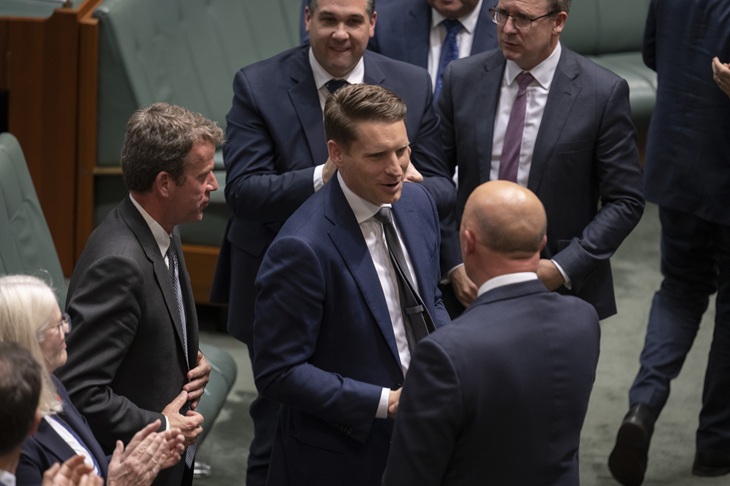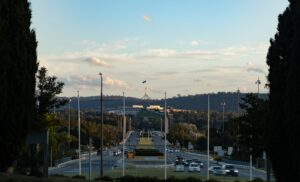
CANBERRA, AUSTRALIA - OCTOBER 27: Andrew Hastie MP congratulates opposition leader Peter Dutton after delivering his budget reply speech at Parliament House on October 27, 2022 in Canberra, Australia. Opposition leader Peter Dutton has outlined the Liberal party's plan for how it would deal with Australia's cost of living pressures following the Albanese government's 2022-23 Budget release on Tuesday 25 October. (Photo by Martin Ollman/Getty Images)
BREAKING: Andrew Hastie has resigned from the Liberal Party’s frontbench, signaling a critical juncture in the party’s ongoing internal conflict between its conservative base and moderates. This resignation comes as the party grapples with its identity and policy direction, just ahead of the pivotal 2028 election.
Hastie, once a prominent figure alongside former Prime Minister Scott Morrison during the pandemic, has escalated tensions within the Coalition. His departure highlights deepening divisions as the party struggles to maintain unity amid conflicting ideologies. A source close to Hastie stated, “Andrew is genuinely committed to preserving the national security of this country… I’m not surprised Andrew has finally had enough and has put the country first, before the Liberal party.”
Appointed as Shadow Minister for Home Affairs in May 2025, Hastie’s military background as a former Special Air Service (SAS) officer lent him credibility on national security issues. His hawkish stance on China and firm views on immigration have increasingly isolated him from moderates, particularly his call for a significant reduction in immigration levels to tackle housing shortages.
According to the 2021 census, Australia has an average of 2.5 people living in each household but faces a housing crisis as the population surges to 27 million with only 11 million homes. Hastie’s position resonated with many in the party’s conservative wing, evidenced by the recent March for Australia, where tens of thousands rallied in support of his views on immigration.
Moreover, Hastie was vocally critical of the party’s commitment to achieving Net Zero emissions by 2050, labeling it economically damaging. He threatened to resign if this agenda continued, highlighting what he perceives as hypocrisy from major polluters like China and India. His criticisms have put him at odds with Opposition Leader Sussan Ley, who has called for party unity and a broader appeal.
In his resignation announcement, Hastie invoked the principle of Cabinet Solidarity, expressing respect for Ley yet asserting his obligation to voice concerns over national importance. His exit raises questions about his future role within the party, with some viewing him as a potential leader for a more conservative faction.
The implications of Hastie’s departure are significant. It signals a potential emboldening of the conservative wing, which may further fracture the party’s unity. As the Coalition prepares for the 2028 election, they face the daunting task of reconciling these internal divisions while presenting a cohesive front to the electorate.
Hastie’s resignation reflects a growing frustration among strong Liberal politicians with the party’s current trajectory, which some perceive as being overly influenced by “woke” politics. The sidelining of voices like Senator Jacinta Nampijinpa Price, deemed “too conservative,” underscores the challenges the party faces in maintaining its foundational principles.
As developments unfold, the Liberal Party must navigate a complex political landscape marked by ideological divides, all while addressing the pressing concerns of the Australian electorate. The urgency of these issues cannot be understated, as the party wrestles with its future direction and electoral viability.
Stay tuned for updates on this developing story, as the ramifications of Andrew Hastie’s resignation continue to impact the political arena in Australia.







